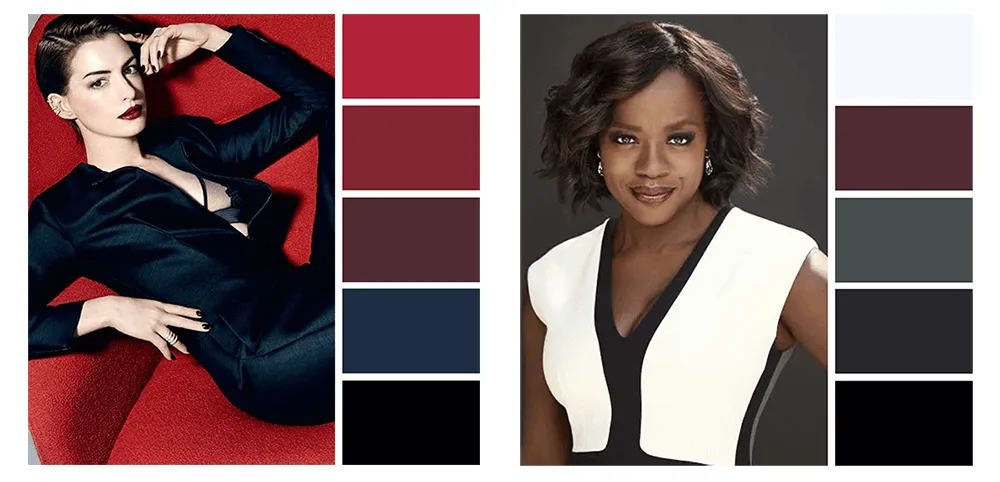When it comes to fashion and beauty, there is a seemingly endless array of colors to choose from. But for those with dark skin tones, not all hues are created equal. While every shade deserves its moment in the spotlight, there are certain colors that can truly make dark skin shine. On the flip side, there are also a few shades that tend to clash or dull the natural vibrancy of darker complexions. In this article, we will dive into the world of color theory and explore which specific shades those with darker skin should avoid.
Understanding Undertones:
Understanding undertones is crucial when it comes to choosing the right colors for any skin tone, especially dark skin. Undertones are the subtle hues that come through your skin and can be classified into three main categories: warm, cool, and neutral. Warm undertones have yellow or golden hues, while cool undertones have blue or pinkish tones. Neutral undertones tend to have a mixture of both warm and cool tones.
For individuals with dark skin, it is important to understand their specific undertone in order to truly enhance their natural beauty with the right colors. Darker complexions typically have warm undertones, such as deep yellows or reds that give a radiant glow. Thus, warm earthy colors like burnt orange, rich browns, and deep reds can complement dark skin beautifully.
On the other hand, cool undertoned dark skin can pull off jewel-toned clothing effortlessly. Colors like emerald green, sapphire blue, and plum shades highlight the richness of cooler undertones in darker complexions. While most individuals with dark skin will fall within warmer tones due to higher melanin levels in their skin cells; understanding different undertone possibilities ensures tailored style choices for every unique complexion!
Colors To Avoid For Warm Undertones
When it comes to choosing colors that complement warm undertones, it’s essential to select shades that enhance your natural glow. While the world of fashion and beauty encourages experimenting with different hues, there are a few colors that may not be the most flattering for those with warm undertones.
- One color to avoid is pastels such as baby pink or mint green. These soft and delicate shades can often wash out warm-toned skin, making it appear dull and lackluster.
- Similarly, cool blues like icy or powder blue may not be the best choice for enhancing warm undertones. The contrast between cool blues and warm skin can create an unflattering clash that dulls down your complexion. Instead, opt for warmer shades of blue like turquoise or teal; these colors bring out the warmth in your skin while adding vibrancy to your overall look.
- Another color worth avoiding for warm undertones is bright white. Although white is considered a classic shade, it can sometimes make warmer tones appear yellowish or sallow. Instead, opt for creamy off-white tones such as ivory or ecru; these softer shades still provide a light and fresh look but without overpowering your beautiful warmth.
Colors To Avoid For Cool Undertones
When it comes to choosing the right colors for cool undertones, there are certain shades that should be avoided by those with dark skin.
- One such color is yellow. While vibrant and cheerful, yellow can clash with cool undertones, making the complexion appear dull and sallow. Instead, consider opting for cooler shades like lavender or mint green that will complement your cool undertones and bring out the natural radiance of your dark skin.
- Another color to steer clear of is pastel pink. Although it may look adorable on some individuals, pastel pink tends to wash out those with cool undertones. Rather than reaching for this delicate hue, experiment with deeper shades like burgundy or plum which will provide a stunning contrast against your dark skin tone. By avoiding these colors that clash with cool undertones, you can enhance your natural beauty and ensure that every day is a confident one!
Finding Flattering Colors For Dark Skin
When it comes to finding flattering colors for dark skin, there are a few guidelines to keep in mind. While it’s important to remember that everyone is unique and personal preference plays a significant role, certain hues tend to complement darker skin tones beautifully. Bold jewel tones like emerald green, royal blue, and deep purple can make a stunning statement and enhance the richness of dark skin. Additionally, warm earthy shades such as terracotta, burnt orange, and mustard yellow can create a striking contrast.
While specific colors may vary depending on undertones within dark skin, there are also some shades that might not be the most flattering. For instance, pastel colors can sometimes wash out the complexion or appear too pale against darker skin tones. Similarly, light neutrals like beige or dove gray may not provide enough contrast to truly highlight the beauty of dark skin. It’s all about experimenting with different shades and finding what works best for you – after all, fashion is all about expressing your individuality!
Conclusion:
In conclusion, it’s important to remember that true beauty lies in embracing your unique features and individuality. While there may be suggestions on which colors to avoid for dark skin, it does not mean that those colors are completely off-limits or will automatically make you less attractive. Beauty comes from within and radiates through confidence and self-acceptance. So instead of focusing solely on societal guidelines or limitations imposed by others, celebrate your dark skin and explore various shades and hues with an open mind.
Every person has a different undertone to their skin, which can affect how certain colors appear against their complexion. Rather than categorizing colors as dos and don’ts for dark skin, consider experimenting with different shades to see what brings out the best in you. Remember that fashion is about expressing yourself and feeling comfortable in your own skin. By embracing your uniqueness and confidently wearing what makes you feel good, the radiance of your inner beauty will shine through effortlessly.
Additionally, seeking inspiration from diverse sources such as fashion magazines, social media influencers, or even cultural heritage can help expand our perception of what looks good on dark skin tones. The world of fashion is constantly evolving, breaking stereotypes, and celebrating diversity. This shift towards inclusivity is empowering individuals with darker complexions to showcase their beauty authentically. By embracing new perspectives on beauty standards and being open-minded when it comes to personal style choices, we can all collectively inspire a more inclusive approach toward fashion choices for people with dark skin.



